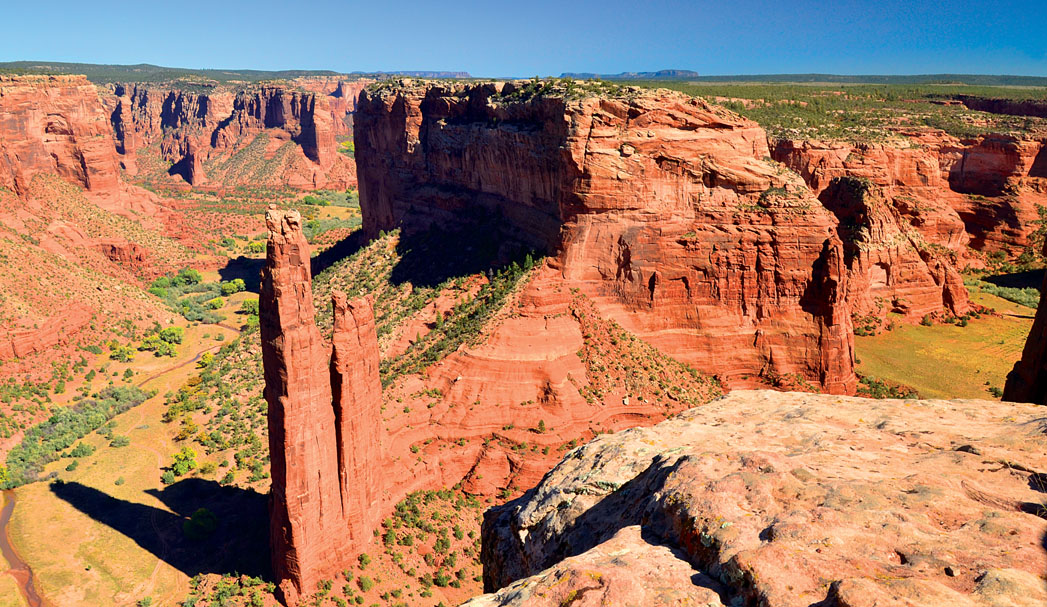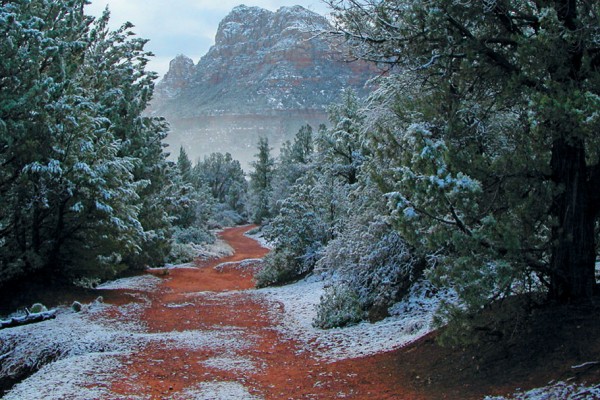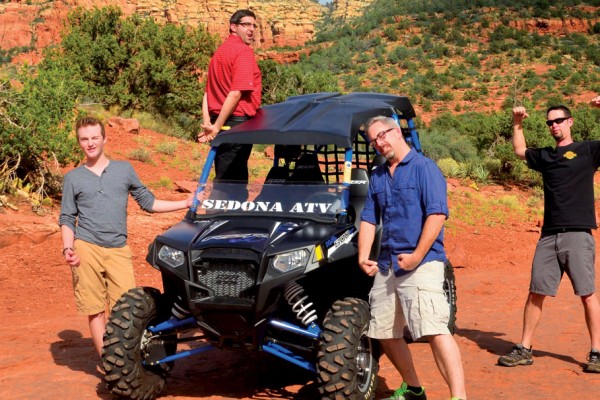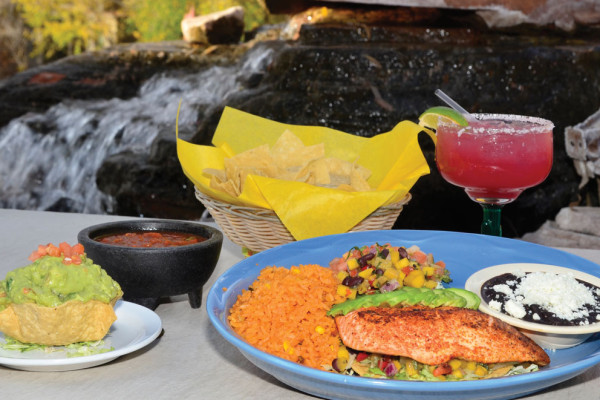Canyon de Chelly, the second largest canyon in the country, reveals its secrets to those who slow down and stay awhile. Drive the north and south rims, and take a tour of the canyon floor where you’ll find ruins, rock art, wildlife and sandstone spires.
Canyon de Chelly Tours
The first thing that strikes you about Canyon de Chelly National Monument is its solitude and stillness. Located in the northeastern part of Arizona, the monument is in the middle of the 27,000-square-mile Navajo Nation. Though it’s technically in the town of Chinle, one of the Navajo Nation’s largest cities (population 4,500), you feel worlds away from everything (including, in many areas, cellphone service). The canyon, the second largest in the country after the Grand Canyon, sees 800,000 visitors annually, a far cry from the nearly 5 million visitors the Grand Canyon receives. Then again, perhaps the extraordinary quiet can be attributed to the fact that we arrived the day the government – and the national monument – reopened after the shutdown of 2013. It wouldn’t be a Sedona Monthly road trip without a little adventure thrown in for good measure.
It’s possible to see the canyon by driving the North Rim and South Rim, but you’ll miss most of the splendor unless you hire a Navajo guide, which is the only way to explore the floor of Canyon de Chelly (pronounced de-shay) and the paralleling Canyon del Muerto. Leon Skyhorse Thomas, owner of Canyon de Chelly Tours, has been leading expeditions into the canyon since 1988. Leon’s company has grown to include eight authorized guides. But before he began conducting tours, Leon had quite the life. Born in the nearby town of Ganado, Leon left Arizona to attend film school at University of California at Los Angeles. He has worked as an actor as well as a film consultant for production companies wanting to film on the Navajo Nation. His film, Canyon de Chelly, Through Navajo Eyes, tells the story of the canyon using historical re-enactments. It’s sold online and at locations in Chinle. Leon even had a stint in a rock band and has recorded both rock ’n’ roll and traditional Native American albums.
Canyon de Chelly Tours offers a basic three-hour tour as well as extended excursions and overnight trips into the canyons. We opted for the basic tour. We boarded Leon’s SUV and drove into the canyon at 9 a.m. The canyon’s busiest months are March through October, and we recommend visiting during this time when the weather is ideal. The walls in Canyon de Chelly range from just 30 feet tall at the mouth of the canyon to 1,000 feet near Spider Rock. (To get to the base of the iconic Spider Rock, you need to book an extended tour.) The canyon floor is soft and sandy and studded with cottonwoods, Russian olives, Australian tamarisk and fruit trees. A year-round creek runs through the canyons, which were formed by wind and water more than 260 million years ago. Leon says approximately 50 Navajo families own property – primarily summer homes – in the canyons.
Our first stop was Petroglyph Rock where we saw pictographs featuring human and animal figures, handprints, hunting scenes, Hopi clan symbols and even a kokopelli – the mischievous flute player. There are more than 2,700 archaeological sites and 700 standing ruins in the canyons, says Leon. (That’s more than all the sites in Mesa Verde National Park, Chaco Canyon National Historical Park and Monument Valley Navajo Tribal Park combined.) The canyon has been occupied since 2500 B.C., making it the oldest continually inhabited place on the Colorado Plateau according to the National Park Service. Canyon de Chelly was designated a national monument in 1931. (Leon says it’s the only national monument where the Department of the Interior does not own the land. The Navajo own the land and thus co-manage the park with the federal government.)
What’s remarkable about touring Canyon de Chelly, especially with Leon’s outfit, is the amount of history you learn. The National Park Service named Leon one of the most knowledgeable guides in the area, and as you drive from one site to the next, cows and horses roaming the canyon floor, Leon tells the history of the Navajo from the creation story to present day. There are so many ruins, especially storage units, along the drive that many times Leon casually points them out from the car window. And as much as the ruins impressed us, it was the countless pictographs and petroglyphs that really captivated our imaginations. Entire panels of rock art tell the stories of battles with the Ute Indians and the Spanish explorers. At Standing Cow Ruin, an enormous cow pictograph watches over the structure that has yet to be excavated. We spotted wild turkeys and then stopped at Ledge Ruin where we saw turkey pictographs. It was also at Ledge Ruin, which was occupied from A.D. 1150 to 1250, that Leon sang a song in his native language that he dedicated to “our future.” With his eyes closed tight, Leon’s voice echoed off the sandstone walls, and once again it felt like we were the only people in all of Canyon de Chelly.
We drove through a tunnel of trees and arrived at Antelope House where we spent time exploring the ruin, which was excavated in the ’70s. The walls around the ruin are covered with pictographs depicting a rainbow, a reverse swastika (a symbol that represented the four directions before the Nazis stole it from the Native Americans) and, naturally, antelope. Navajo sell fry bread, flutes, pottery and jewelry near the ruin. Lest you forget it’s the 21st century, many vendors accept credit cards.




